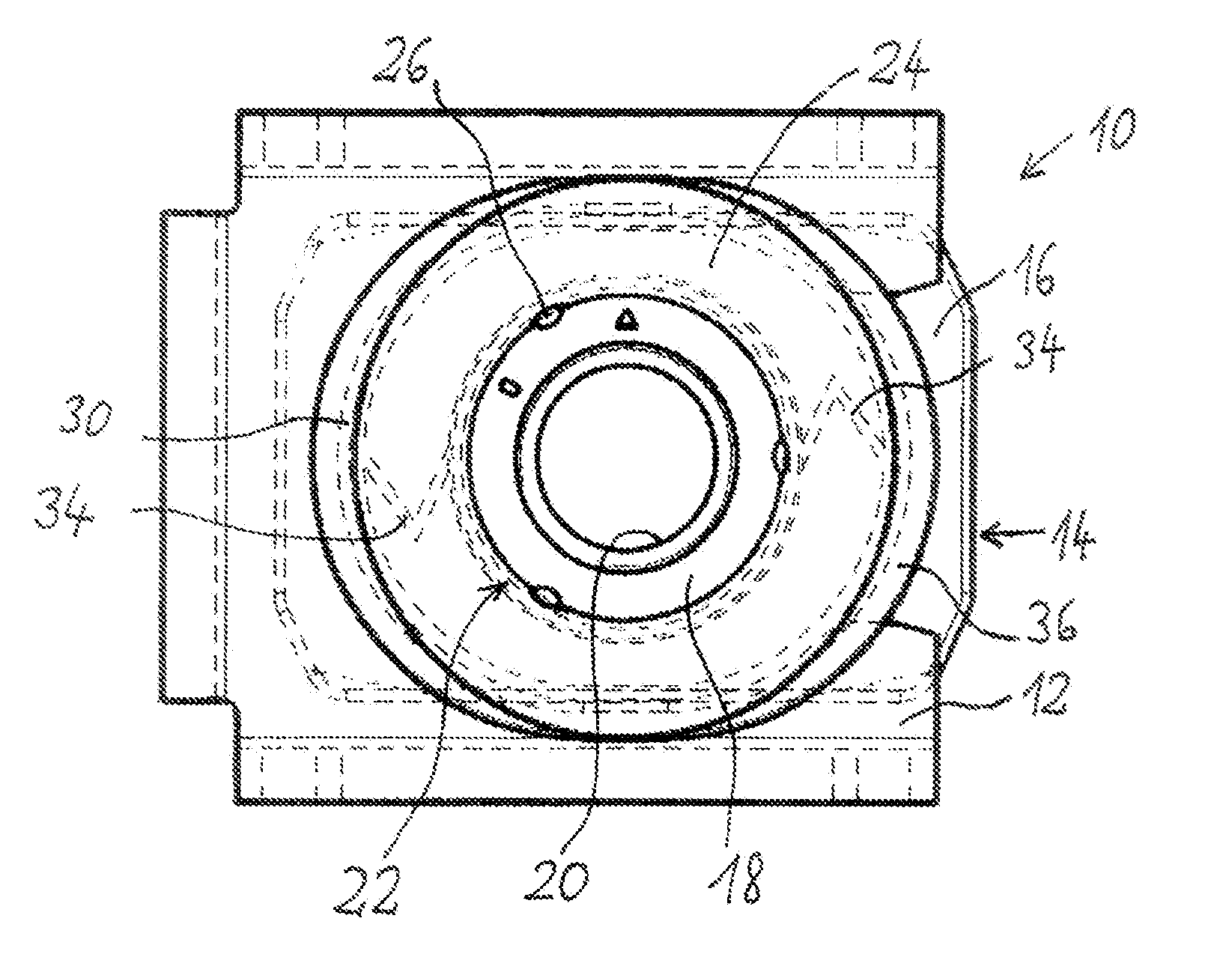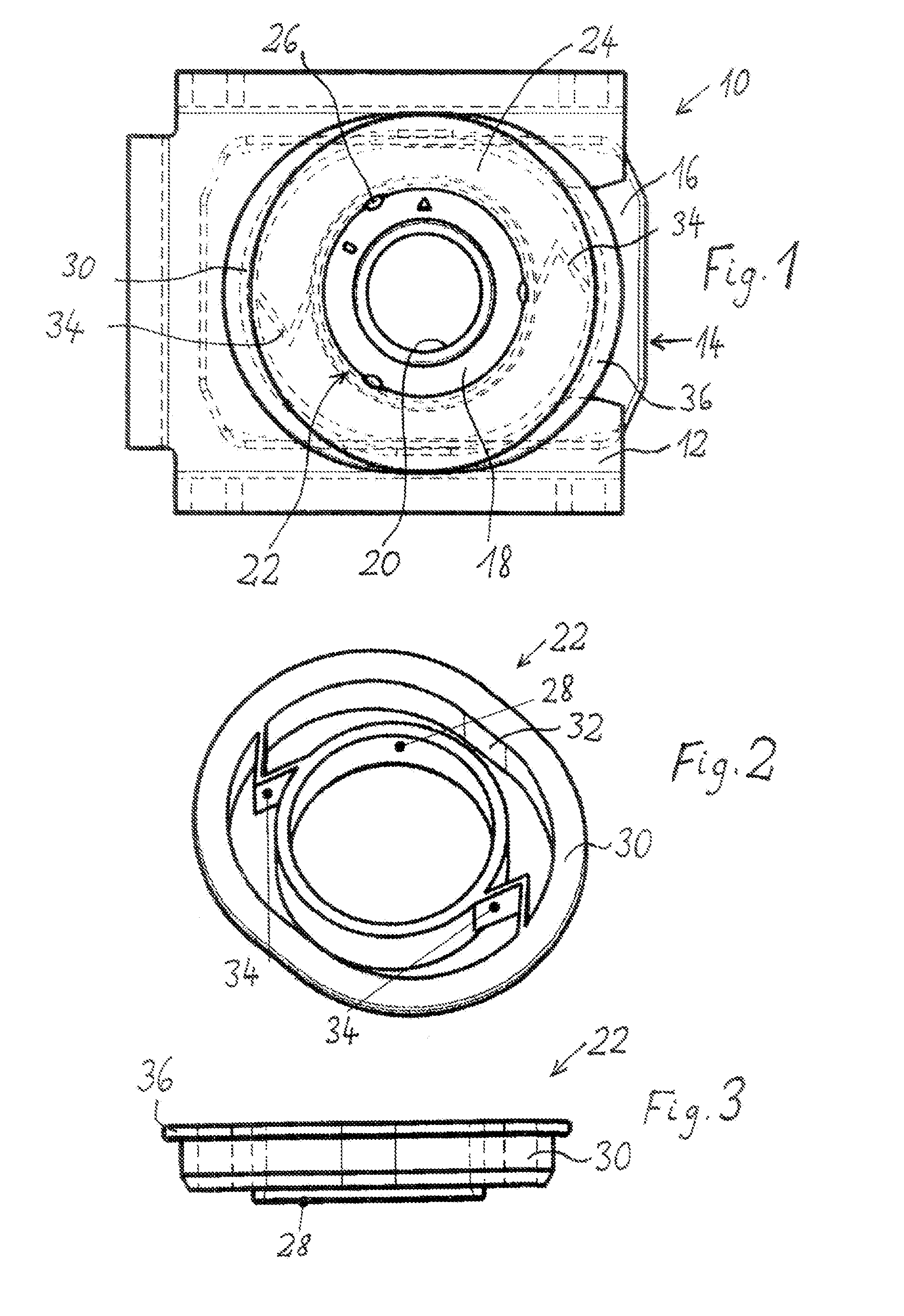Self-centring cage nut
- Summary
- Abstract
- Description
- Claims
- Application Information
AI Technical Summary
Benefits of technology
Problems solved by technology
Method used
Image
Examples
Embodiment Construction
[0023]FIG. 1 shows a cage nut 10 according to the invention from the front, that is to say viewed from the direction in which the screw bolt is usually screwed into the cage nut 10.
[0024]Components of the cage nut 10 which are not directly visible are shown here in broken lines.
[0025]As is conventional, the nut comprises a rectangular cage 12 which can be welded to the component to which the cage nut 10 according to the invention is to be attached. At the front, the cage 12 has a substantially circular opening which is broken open towards the side on one side, namely on the side on which a nut body 14 can later be inserted. The nut body 14 in such case has an enlarged flange 16 as holding element and a hollow-cylindrical shoulder 18 with an internal thread 20. The hollow-cylindrical shoulder 18 in this case extends with its
[0026]axial direction in the direction of viewing of FIG. 1, that is to say, in the direction in which a screw bolt can be screwed into the cage nut according to ...
PUM
 Login to View More
Login to View More Abstract
Description
Claims
Application Information
 Login to View More
Login to View More - R&D
- Intellectual Property
- Life Sciences
- Materials
- Tech Scout
- Unparalleled Data Quality
- Higher Quality Content
- 60% Fewer Hallucinations
Browse by: Latest US Patents, China's latest patents, Technical Efficacy Thesaurus, Application Domain, Technology Topic, Popular Technical Reports.
© 2025 PatSnap. All rights reserved.Legal|Privacy policy|Modern Slavery Act Transparency Statement|Sitemap|About US| Contact US: help@patsnap.com



